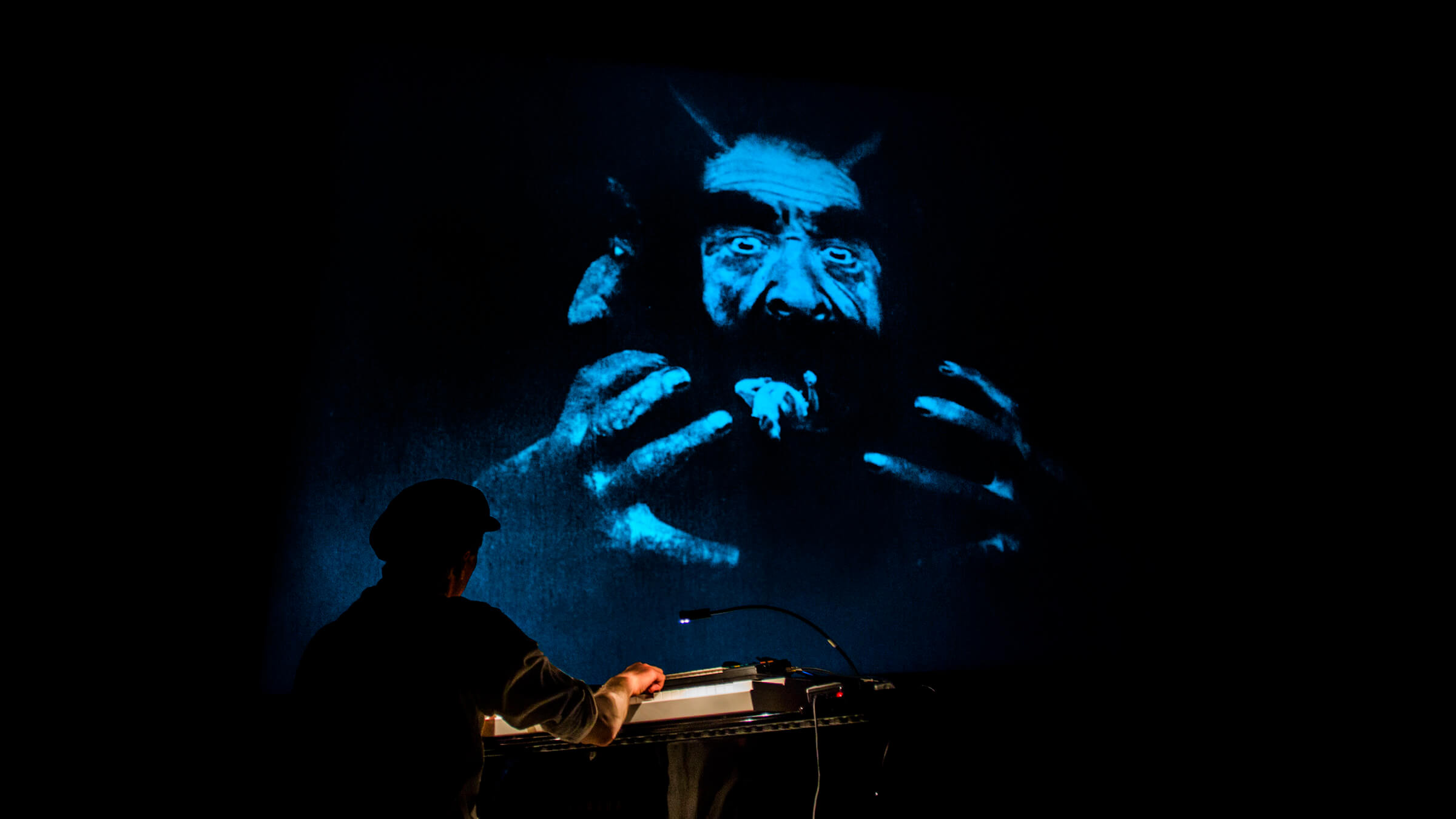This feature was published in conjunction with the screening of L’Inferno at SFSFF 2019
From rollicking adventures to cinematic sermons, silent film portrayals of Hell and Satan sizzle with innovation, dark spectacle, and insight into the shadowy side of human nature.
MERRY FROLICS OF SATAN
Cinema’s earliest depictions of the Devil and his netherworld intermingle humor, horror, and wonder. A vehicle for the Dark One’s spells and conjurings, Méliès’s Le Manoir du Diable revels in the power of film as a kind of black magic. In Le Cake-walk Infernal, demons in Hell learn the popular dance, which Mephistopheles drolly exaggerates by detaching his legs and arms. Méliès’s unsettling Les Quatre-cents Farces du Diable ends on a note of revulsion. After an awe-inspiring tour of the heavens in a skeleton-horse-drawn carriage, a mortal is dragged to Hell where demons roast him like a pig. Lépine’s Le Fils du Diable Fait la Noce à Paris centers a romantic comedy on the Devil’s son, sent to Paris to cure his melancholy. He departs in style, chauffeured by a goblin, as sparkler-waving demons illuminate Hell’s catacombs. Humor arises from the accessibility of Lépine’s Hell—reachable by automobile and telephone—and the normalcy of Satan’s family unit: bourgeois parents fussing over their spoiled son. In Segundo de Chomón’s Le Spectre Rouge, a horned skeleton emerges from a fiery coffin to show off his sorcery. Most memorably, he inches creepily toward the camera, offering a closer look at his collection of bottled women. Jewel-toned, stencil-colored infernal trappings, like purple stalactites, red flames, and golden smoke, enhance the film’s thrilling illusions.
TO HELL AND BACK
Special effects pioneered in trick films enabled feature films to recreate Hell as imagined by Dante. L’Inferno’s filmmakers emulate Gustave Doré’s engravings and sometimes magnify their horror. An illustration of a mutilated soul holding its own head is disturbing, but the equivalent on film, with a thrashing, screaming decapitated head, is much more shocking. Whereas Doré depicts Satan as a sinister bulk in the distance, L’Inferno captures him up close, as he shoves perfidious souls into his abysmal mouth. Fox’s big-budget 1924 film Dante’s Inferno cuts between two plot lines: a contemporary businessman destroying lives and Dante’s journey. Glistening shots of sadistic demons brutalizing naked souls and writhing bodies scalded by boiling pitch might give anyone pause to reevaluate their life choices. Indeed, as the ruthless slumlord reads Dante, infernal visions bleed into his reality. After a smirking devil materializes by his desk, the tycoon has an elaborate nightmare—ending with demons casting him into a steaming pit—and vows to change his ways.
Though not based on Dante, Guido Brigone’s Maciste all’Inferno remixes the poem’s imagery and weighty spiritual stakes with a proto-superhero, a tongue-in-cheek tone, and eye-popping film tricks. In the 1925 installment of his popular series, muscle-bound champion Maciste thwarts the Devil’s minions on Earth, so vengeful Pluto beams him to Hell. There he tangles with temptresses who transmogrify him into a shaggy demon and he fights off legions of fallen angels. The action-packed fantasy abounds with wild, often whimsical spectacle, from crowded fight scenes to supernatural phenomena, like a flying dragon and a demon’s face that rebuilds itself courtesy of stop-motion after Maciste punches it in.
LOVE AND DAMNATION
In Nino Oxilia’s Rapsodia Satanica and F.W. Murnau’s Faust, Mephistopheles dangles the promise of youth to ensnare protagonists’ souls. Murnau etches stark images reminiscent of medieval woodcuts to suggest the tug-of-war between higher aspirations and unholy lusts. Oxilia floods the screen with sensual temptations, heightened by an astonishing mixture of added color. Flowers, reflective surfaces, luxurious furnishings, textured decorations, and Borelli’s sumptuous costumes seem all the more tantalizing and alive with stencil-added shades of crimson, violet, green, and rose. While Faust’s capacity for love defeats the Devil, love lures Rapsodia’s heroine to her doom. At the conclusion of Faust, Murnau reverses the symbolism of flames by turning a scene of fiery execution into a glowing miracle of redemption. Throwing himself onto Gretchen’s pyre, Faust proves his love and escapes the fires of damnation. Smoke rises around the lovers and they ascend to heaven in a ball of light. Rapsodia Satanica’s Alba also risks everything to reunite with her lover. In a kaleidoscopic shot awash in pink, she adorns herself with gauzy veils before a mirror. As she floats toward her assignation through a breeze-kissed verdigris courtyard, she transforms into an angel, a priestess, a phantom, and a bride all at once. Yet when Alba reaches out to embrace her lover, Mephistopheles sweeps her up in his purplish-red cape. In a bitter echo of the earlier mirror shot, he shows Alba her aged reflection in a gazing pool as she dies. The heady erotic buildup is consummated in despair and decay, evoking the intertwined ethos at the heart of the diva film: desire and damnation, beauty and death.
MIDNIGHT TRAIN TO HADES
Eloyce and James Gist’s Hellbound Train from 1930 puts a 20th-century twist on the Dantesque litany of sins. Intended to be shown at black churches and social gatherings, this independently produced film tallies vices, from jazz to murder, through the metaphor of different cars on a train. Like a visual call-and-response after each sin, intertitles note “the devil rejoices” and a caped Satan dances. Though the train derails into hellfire, the majority of the film’s horrors belong to the mortal realm. A child smokes her neglectful mother’s cigarette and sips her cocktail. A young girl sells herself to the bootlegger who defrauded her father. A man asked to help an inebriated woman rapes her instead. Handheld shots and jump cuts intensify the film’s dizzying sense of lives spinning tragically out of control. The Gists’ vignettes suggest that the most terrifying version of Hell is the one that humans unleash here on Earth.
Image credit: Pamela Gentile

